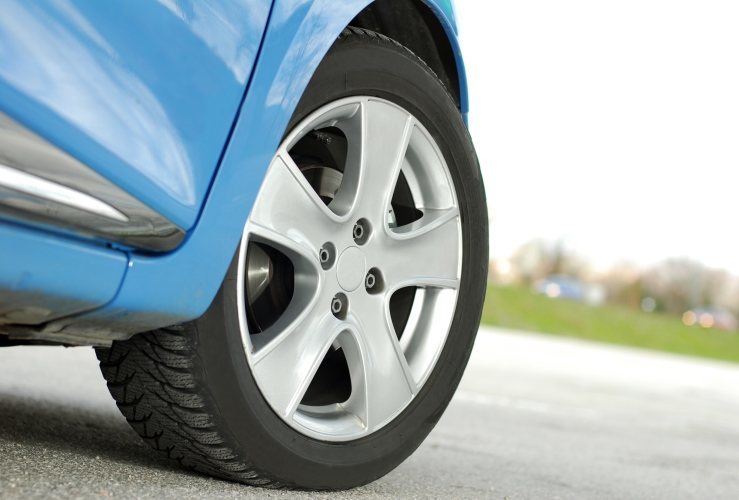Your tyres are the only part of your car that come into contact with the road, which is why it is vital that they are kept in good condition.
Figures from the Department for Transport have shown that more than 1,200 road casualties are caused each year because of illegal, defective or under-inflated tyres.
While it is expected that you'll get around 20,000 miles out of front tyres on a front-wheel-drive car and double for rear tyres, knowing when to change them is more about assessing their wear and tear regularly.

What increases tyre wear?
Your tyres are much more likely to wear out quickly through aggressive cornering and braking, driving at high speeds and carrying excess loads. Having the wrong tyre pressure and poor alignment also increases wear.
Getting pressure right for safety
Tyre pressure is one of the linchpins of safe driving but many don't know how to check that their tyres are properly inflated.
Pressure needs to be checked every month and before each long journey. Each vehicle manufacturer has a recommended level, which is found in the vehicle handbook and on the plate located either in the fuel filler cap or the driver's door sill. It's important to inflate tyres to the point stipulated by the manufacturer to get the most out of your tyres and to be safe on the road.
It's important to remember to only check tyre pressure when the tyres are cold and check all four tyres and the spare tyre.
Ensure the gauge used is accurate. You'll also want to be use the correct pressure scale for the gauge you use.
Visual inspection
When you're checking your tyre pressure, take a look at the general condition of each tyre. Are there any stones or other objects in the tread? Are there any unexpected marks, lumps or cuts? If the answer to these questions is yes, then remove debris and take your tyres to be looked at, as they may need replacing.
Ensuring the right tread
Currently the legal tread depth in the UK is 1.6mm across 75 per cent of the tyre. Nevertheless, the greater the tread, the greater the grip, so you may want to exceed these specifications.
To check the tread of your tyres insert a 20p coin into the main tyre grooves at several places around the circumference of the tyre and across the width. The rule of thumb is that if the outer band of the coin is visible, the tread may be illegal and will need checking by a qualified specialist.
Evening out wear and tear
If your tyres aren't wearing evenly, your tyres may be misaligned. If your wheels aren't aligned properly, you're likely to experience wear across just one edge of the tyre. If you notice this is happening, get a specialist to check your tracking.
Uneven wear and tear should be easily noticeable when making a visual inspection of your tyre.
Embrace seasonality
You wouldn't wear a summer jacket to protect you in the dead of winter so why would you expect your summer tyres to perform during the colder months?
To ensure you can drive safely during the winter months, be sure to switch to winter weather tyres. This will give you more grip during inclement weather and help you better get from A to B.




